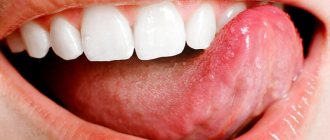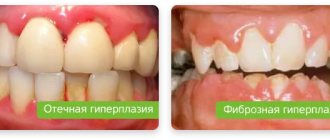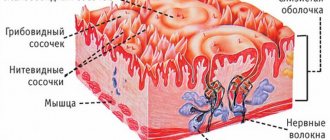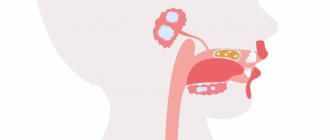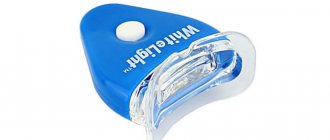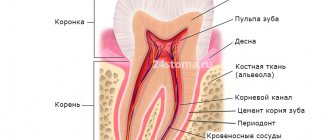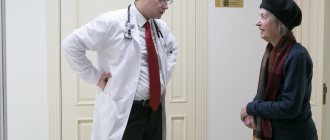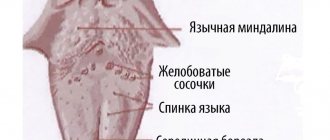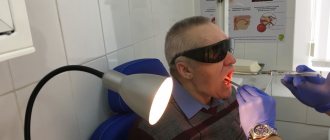The human body is a multi-stage structure, each organ and system of which is closely interconnected with each other and with the environment. And so that this connection is not interrupted even for a split second, a nervous system is provided - a complex network that permeates the entire human body and is responsible for self-regulation and the ability to adequately respond to external and internal stimuli. Thanks to the well-coordinated work of the nervous system, a person can adapt to the factors of the external world: any, even minor, change in the environment causes nerve cells to transmit hundreds of impulses at an incredibly high speed so that the body can instantly adapt to new conditions. Internal self-regulation works in a similar way, in which the activity of cells is coordinated in accordance with current needs.
The functions of the nervous system affect the most important processes of life, without which the normal existence of the body is unthinkable. These include:
- regulation of the work of internal organs in accordance with external and internal impulses;
- coordination of all units of the body, from the smallest cells to organ systems;
- harmonious interaction between humans and the environment;
- the basis of higher psychophysiological processes characteristic of humans.
How does this complex mechanism work? What cells, tissues and organs make up the human nervous system and what is each of its sections responsible for? A brief excursion into the basic anatomy and physiology of the human body will help you find answers to these questions.
Organization of the human nervous system
Nerve cells cover the entire body, forming an extensive network of fibers and endings. This system, on the one hand, unites every cell of the body, forcing it to work in one direction, and on the other hand, it integrates a particular person into the environment, balancing his needs with external factors. The nervous system ensures the normal processes of digestion, respiration, blood circulation, the formation of immunity, metabolism, etc. - in a word, everything without which normal life activity is unthinkable.
The effectiveness of the nervous system depends on the correct formation of the reflex - the body's response to irritation. Any impact, be it external changes or internal imbalance, triggers a chain of impulses that instantly affect the body, and it, in turn, forms a response. Thus, the human nervous system forms the unity of the tissues, organs and systems of the human body with each other and with the outside world.
The entire nervous system consists of millions of nerve cells - neurons, or neurocytes, each of which has a body and several processes.
The classification of neuron processes depends on what function it performs:
- the axon sends a nerve impulse from the body of the neuron to another nerve cell or the final target of the chain - a tissue or organ that must perform a certain action;
- The dendrite receives the sent impulse and leads it to the body of the neuron.
Due to the fact that each nerve cell is polarized, the chain of nerve impulses never changes direction, falling into the right direction. In this way, each nerve impulse moves forward, initiating the work of muscles, internal organs and systems.
Types of nerve cells
Before considering the nervous system as a whole, it is necessary to understand what functional units it consists of. The NS includes:
- Sensory neurons. Located in nerve ganglia that receive information directly from receptors.
- Interneurons are an intermediate link, thanks to which the received impulse is transmitted from sensitive neurons further along the chain.
- Motor neurons. They act as initiators of a response to a stimulus, transmitting a signal from the brain to the muscles or glands, which normally should perform their assigned function.
It is according to this scheme that any response of the human body to an external or internal stimulus signal, which acts as an impetus for a specific action, is built. As a rule, the passage of a nerve impulse takes a few fractions of a second, but if this time is delayed or the chain is interrupted, this indicates the presence of a pathology of the nervous system and requires serious diagnosis.
Functions of nerves in teeth
The main function of the nerve is sensory. When bacterial damage (caries) spreads to the deep tissues of the tooth, a painful reaction occurs. Pain is the body’s signal that something is wrong and help is needed. The nerve is not located in the tooth cavity in isolation. It is part of the neurovascular bundle, a component of the dental pulp. The functions of the pulp are varied:
- tooth nutrition;
- growth and development;
- mineralization of enamel and dentin;
- immune protection.
The tooth pulp is treated and tried to be preserved in all cases where possible. It is especially important to do this in children and adolescents, since their teeth have not yet fully formed.
Structure and types of the nervous system: structural classification
To simplify the structure of the nervous system, in medicine there are several classification options depending on the structure and functions performed. Thus, anatomically, the human nervous system can be divided into 2 broad groups:
- central (CNS), formed by the brain and spinal cord;
- peripheral (PNS), represented by nerve ganglia, endings and nerves themselves.
The basis of this classification is extremely simple: the central nervous system is a kind of connecting link in which the analysis of the incoming impulse and further regulation of the activity of organs and systems is carried out. And the PNS serves to transport the received signal from the receptors to the CNS and the subsequent activator, but from the CNS to the cells and tissues that will perform a specific action.
central nervous system
The central nervous system is a key component of the nervous system, because it is here that the main reflexes are formed. It consists of the spinal cord and brain, each of which is reliably protected from external influences by bone structures. Such thoughtful protection is necessary, since each part of the central nervous system performs vital functions, without which it is impossible to maintain health.
Spinal cord
This structure is contained within the spinal column. It is responsible for the simplest reflexes and involuntary reactions of the body to stimuli.
In addition, spinal cord neurons coordinate the activity of muscle tissue, which regulates defense mechanisms. For example, upon feeling an extremely hot temperature, a person involuntarily withdraws his palm, thereby protecting himself from a thermal burn. This is a typical reaction controlled by the spinal cord.
Brain
The human brain consists of several sections, each of which performs a number of physiological and psychological functions:
- The medulla oblongata is responsible for the vital functions of the body - digestion, respiration, blood movement through the vessels, etc. In addition, the nucleus of the vagus nerve is located here, which regulates the autonomic balance and psycho-emotional reaction. If the nucleus of the vagus nerve sends active impulses, a person’s vitality decreases, he becomes apathetic, melancholic and depressed. If the activity of impulses emanating from the core decreases, the psychological perception of the world changes to a more active and positive one.
- The cerebellum regulates the precision and coordination of movements.
- The midbrain is the main coordinator of muscle reflexes and tone. In addition, neurons regulated by this part of the central nervous system contribute to the adaptation of the sensory organs to external stimuli (for example, pupil accommodation at dusk).
- The diencephalon is formed by the thalamus and hypothalamus. The thalamus is the most important organ that analyzes incoming information. The hypothalamus regulates the emotional background and metabolic processes; there are centers responsible for the sensation of hunger, thirst, fatigue, thermoregulation, and sexual activity. Thanks to this, not only physiological processes are coordinated, but also many human habits, for example, the tendency to overeat, the perception of cold, etc.
- Cerebral cortex. The cerebral cortex is a key link in mental functions, including consciousness, speech, perception of information and its subsequent comprehension. The frontal lobe regulates motor activity, the parietal lobe is responsible for bodily sensations, the temporal lobe controls hearing, speech and other higher functions, and the occipital lobe contains the centers of visual perception.
Peripheral nervous system
The PNS provides interconnection between organs, tissues, cells and the central nervous system. Structurally, it is represented by the following morphofunctional units:
- Nerve fibers, which, depending on the functions performed, are motor, sensory and mixed. Motor nerves transmit information from the central nervous system to muscle fibers, sensitive nerves, on the contrary, help to perceive information received through the senses and transmit it to the central nervous system, and mixed nerves are involved to one degree or another in both processes.
- Nerve endings, which are also motor and sensory. Their function is no different from fiber structures with the only nuance - the nerve endings begin or, conversely, end the chain of impulses from the organs to the central nervous system and back.
- Nerve ganglia, or ganglia, are clusters of neurons outside the central nervous system. The spinal ganglia are responsible for transmitting information received from the external environment, and the autonomic ganglia are responsible for transmitting information about the state and activity of the internal organs and resources of the body.
In addition, all peripheral nerves are classified depending on their anatomical features. Based on this characteristic, there are 12 pairs of cranial nerves that coordinate the activity of the head and neck, and 31 pairs of spinal nerves that are responsible for the torso, upper and lower extremities, as well as internal organs located in the abdominal and thoracic cavities.
Cranial nerves originate from the brain. The basis of their activity is the perception of sensory impulses, as well as partial participation in respiratory, digestive and cardiac activity. The function of each pair of cranial nerves is presented in more detail in the table.
| No. | Name | Function |
| I | Olfactory | Responsible for the perception of various odors, transmitting nerve impulses from the olfactory organ to the corresponding center of the brain. |
| II | Visual | Regulates the perception of visual data by delivering impulses from the retina. |
| III | Oculomotor | Coordinates the movement of the eyeballs. |
| IV | Block | Along with the oculomotor pair of nerves, it takes part in the coordinated movement of the eyes. |
| V | Trigeminal | Responsible for sensory perception of the facial area, and also participates in the act of chewing food in the oral cavity. |
| VI | Abductor | Another nerve that regulates the movements of the eyeballs. |
| VII | Facial | The nerve that coordinates facial contractions of the facial muscles. In addition, this pair is also responsible for taste perception, transmitting signals from the papillae of the tongue to the brain center. |
| VIII | vestibulocochlear | This pair is responsible for the perception of sounds and the ability to maintain balance. |
| IX | Glossopharyngeal | Regulates the normal activity of the pharyngeal muscles and partially transmits taste sensations to the brain center. |
| X | Wandering | One of the most significant cranial nerves, the functionality of which determines the activity of internal organs located in the neck, chest and abdominal wall. These include the pharynx, larynx, lungs, heart muscle and digestive tract organs. |
| XI | Dorsal | Responsible for contractions of muscle fibers of the cervical and shoulder regions. |
| XII | Sublingual | Coordinates the activity of the tongue and partially forms speech skills. |
The activity of the spinal nerves is classified much more simply - each specific pair or complex of pairs is responsible for its assigned area of the body with the same name:
- cervical - 8 pairs,
- infants - 12 pairs,
- lumbar and sacral - 5 pairs respectively,
- coccygeal - 1 pair.
Each representative of this group belongs to mixed nerves, formed by two roots: sensory and motor. That is why the spinal nerves can both perceive an irritating effect, transmitting an impulse along the chain, and intensify activity in response to a message from the central nervous system.
Symptoms of inflammation of nerve endings
In the neurological clinic, half of the diseases are pathologies of the peripheral nervous system. Moreover, in most cases they do not threaten human life, but become the main prerequisites for loss of ability to work.
This is due to structural changes in the nerve fiber, which disrupt not only motor and autonomic functions, but also affect sensory conduction. The main symptom of such manifestations is severe pain and is commonly called neuritis or neuropathy.
Nerve endings are schematically similar to the branches of the circulatory system, therefore the localization of their pathological changes occurs in any segment of the human body. However, the symptoms are characteristic of the specific location of nerve damage.
Spinal nerve disorders
The most common (especially in old age) are neurological diseases in the back area:
| Name | Brief description of the pathology |
| Inflammation of the sciatic nerve | The disease is characterized by aching, stabbing, sharp or dull pain starting from the lower back. A shooting sensation spreads down the lower limb all the way to the toes. May be accompanied by numbness, swelling, and redness of the skin. At the site of nerve damage, the temperature may increase or decrease relative to the rest of the body. Nerve damage accompanied by a feeling of cooling and “pins and needles” is called sciatica. |
| Radiculitis | Changes in the spinal cord roots cause pain in the lumbosacral region. A lingering burning pain from the buttock to the foot is likely. The peculiarity of radiculitis is that it increases sensations during sudden movements: it is difficult for a person to sit down, stand up, or bend the body. Radiculitis of the cervico-brachial area is identified, which spreads the pain syndrome to the neck, shoulder blade and shoulder. Makes itself felt when coughing and raising hands. In severe cases, it completely immobilizes the neck and head. |
| Radiculopathy | In another way, radicular syndrome, which occurs due to compression of the roots of the spinal nerves, but manifests itself mainly not in the back. Sharp tingling of internal organs, in the arms and legs, neck and head - symptoms of radicular disorders. As a rule, it has an increasing character over time. |
Intercostal neuralgia
Accompanied by girdling pain from the back to the chest. When moving, shooting spasms, both prolonged and point-like, are felt. There is stiffness and stabbing pain when breathing and coughing. Neuralgia of the intercostal nerves is often accompanied by involuntary muscle contractions, sweating and numbness of the skin around the chest.
Nerve lesions in the legs
Serious consequences come from disorders of nervous activity in the lower extremities:
| Diseases | Symptoms |
| Polyneuropathy | Toxic damage to the nerves of the lower extremities is accompanied by impaired sensitivity of the feet. Itchy and tingling sensations and convulsive manifestations occur. The gradual spread of affected areas of nervous tissue leads to muscle atrophy, up to necrosis. Accompanying feelings of hypothermia or sweating, sometimes together. |
| Tibial nerve neuritis | There is a decline in motor processes in the foot, the function of toe flexion decreases and, as a result, the patient loses the ability to stand on his toes. There is atrophy of the posterior surface of the leg and the lower surface of the foot. Painful pulling sensations occur in the popliteal region and heel tendon |
| Peroneal nerve neuropathy | The main symptom is the inability to stand on the heel. The foot hangs down, the function of extending the toes and ankle joint does not work. The predominant sensations are numbness in the muscles of the anterior surface of the leg and the back of the foot. The pain syndrome is observed during walking and intensifies with increasing dynamics. |
Hand nerve lesions
No less serious problems are caused by pathologies in the nervous activity of the upper extremities:
- Neuritis of the median nerve. The lesion leads to the inability to flex the hand and dysfunction of the interphalangeal joints of 1-4 fingers. The sensitivity of the palm decreases with its gradual flattening. The muscles of the forearm, as well as the skin of the lower part of the arm, atrophy. Accompanied by vegetative-vascular disorders in the form of sweating of the palm, bluish skin and destruction of the nail plates.
- Radial nerve neuropathy. It is characterized by deformation of the hand due to depletion of small muscles. Aching pain occurs with decreased sensitivity in the 4th and 5th fingers. The patient does not have the ability to bend the thumb and rest the entire palm on it. There is a functional disorder of the elbow and wrist joints. Radial neuritis is also called drop hand syndrome.
Disturbances in the nerves of the head and face
Damages to the nerves of the head are also quite numerous:
- Trigeminal neuralgia. Distributes throughout the entire head and face area. Accompanied by a burning, sharp pain with attacks from several seconds to a couple of minutes. This is characterized by the removal of the pain signal from the site of nerve damage. When a symptom occurs, psychological stiffness occurs, fear of making any movement, and possible holding of breath until the nerve relaxes. Externally it is expressed in profuse lacrimation and mucous secretion from the nose. Convulsive contractions of the facial muscles are often observed.
- Neuritis of the facial nerve. The most pronounced symptom is facial asymmetry, and the curvature occurs in the healthy direction. Characteristic peripheral paralysis is accompanied by changes in skin folds, the inability to close the eye - the eyeball rolls up. When chewing, food remains behind the cheek, and the motor functions of the tongue are weakened. Accompanied by disturbances of taste and hearing, lacrimation and salivation increase or decrease, and dry mouth often occurs.
- Neuralgia of the occipital nerve. The pain syndrome affects one half of the back of the head in accordance with the affected branch of the nerve. The shootings are localized in the ear, neck, and shoulder blade. They intensify with any dynamic movements, coughing and sneezing. The patient is forced to fix the position of the head and avoid sudden turns. There may be a feeling of numbness in the occipital region. A chronicle of jerking headaches gradually develops.
- Slader's syndrome. Neuritis of the pterygopalatine ganglion causes a sharp spasm in the area of the eye, jaw, and nasal septum. The main distinguishing symptom is pressing pain in the palate and tongue with profuse salivation. Spreads to the ear, neck and half of the head. The development of dizziness with sensations of noise and ringing in the ears is typical. There is a high probability of redness on the corresponding side of the face with an increase in the volume of lacrimation. At least an hour passes before the nerve begins to relax.
This is the most common part of neurological disorders of the peripheral system. The causes can be trauma, infection, intoxication, compression and many other disorders. All prerequisites can be acute or chronic, and pain sensitivity depends on the duration of the disease.
Morphofunctional division of the nervous system
There is also a functional classification of parts of the nervous system, which includes:
- The somatic nervous system regulates the functions of skeletal muscles. It is controlled by the cerebral cortex, and therefore is completely subordinate to the conscious decisions of a person.
- The autonomic nervous system, responsible for the activity of internal organs. Its centers are located in the brain stem, and therefore it is not consciously regulated in any way.
In addition, the autonomic system is divided into 2 more significant functional departments:
- Sympathetic. Activated when energy is consumed;
- Parasympathetic. Responsible for the recovery period of the body.
Treatment
Human nerve endings, the recovery scheme of which corresponds to the treatment of inflammatory processes, respond to all types of therapy: drugs, physiotherapeutic procedures, surgery and some folk remedies:
- Medication – first of all, analgesic agents are prescribed to relieve pain symptoms. For neuritis of infectious origin, topical antibiotics and antiviral drugs are prescribed. A frequent effect is exerted by a glucocorticoid drug, which is capable of universally removing fermentation in the area of inflammation. A sharp attack of radiculitis is temporarily relieved with diclofenac-based medications. Vasodilating and decongestant drug groups are used. Complexes of vitamins B and C and nicotinic acid are often added to the course of treatment. To improve neuromuscular conduction, the appropriate pharmacological group is used: to enhance contractile function - cholinomimetic drugs, to relax muscles - muscle relaxants. The latter have a positive effect in the fight against intercostal neuralgia. For the treatment of diabetic polyneuropathy, the correct external insulin dosing system is calculated. Anticonvulsants are used to restore limb nerves.
- Physiotherapeutic – the entire range of physiotherapeutic treatment procedures is suitable for the treatment of neuralgia. When restoring nerve fibers of the face and head, ultra-high-frequency therapy is used, which has an anti-inflammatory effect on the affected area of the nerve. At the same time, it increases blood circulation and lymph flow, which gradually restores nerve conductivity. Ultraviolet irradiation is used to relieve acute inflammation. Diadynamic currents, otherwise known as “Bernard currents,” are prescribed as impulse therapy for neuralgia of various localizations. Laser therapy, which acts at a depth of up to 3 cm from the skin, has a positive effect in the treatment of nervous disorders. This allows the nerve plexuses located close to the surface of the body to be affected. Laser physiotherapy is actively used in the restoration of the trigeminal and facial nerves, lumbosacral plexus, cervical and brachial nerve branches.
- Exercise therapy and massage. Therapeutic exercise and massage have both a therapeutic and preventive effect in the event of neuritis. The main goal is to strengthen the spinal nerve branches by placing stress on the spine.
Human nerve endings (the PNS circuit allows you to influence nerve endings through muscle tone) respond well to massage. When treating neuralgia of the face and head, special massage schemes with acupressure and vibration techniques are used.
When massaging the occipital region, avoid sharp chopping movements and tapping. A course of facial gymnastics is prescribed. Exercise therapy and massage techniques are the safest for humans due to the natural approach to healing, as opposed to the drug method.
- Surgical treatment – operations on nerve fibers and nodes are approached in two cases: lack of results in other treatment methods and traumatic consequences. The latter predominate in neurological surgery and consist of complex multi-stage operations. Microsurgical techniques are used using high-precision optics, special instruments and ultra-thin suture material. In the case of non-traumatic development of trigeminal neuritis, a neurosurgical operation is used - microvascular decompression. The effect is achieved by installing a Teflon protector between the damaged nerve and the vessel, thereby restoring the connection between the periphery and the central nervous system. To relieve a patient from inflammation of the sciatic nerve, they resort to removing the provoking factor - an intervertebral hernia or part of the affected vertebra.
- Folk remedies - the main goal of folk medicine is pain relief and relaxation of the nerve ending. Topical application involves fresh leaves of geranium, aloe, and horseradish. Leaves are applied to the sore spot and wrapped in several layers of warm cloth. For internal use, decoctions of chamomile, peppermint, sage and willow bark are used. Dried and crushed parts of plants are poured with boiling water and infused under a lid. They relieve pain and also have a general sedative and anticonvulsant effect. To treat disorders of the facial and trigeminal nerves, a hard-boiled egg helps - it is peeled and cut in half before it cools, then applied to the diseased area.
The human body is equipped with a dense system of nerve endings that are responsible for the full functionality of the body.
If the circulatory system plays a transport role, then the peripheral nervous system, which schematically repeats it, is responsible for motor and sensory tasks. Disturbances in the nerves, regardless of their location and scale, lead to various consequences - from mild inconvenience to paralyzing and painful manifestations.
Somatic nervous system
Somatics is a department of the nervous system that is responsible for the delivery of motor and sensory impulses from receptors to the organs of the central nervous system and back. Most of the nerve fibers of the somatic system are concentrated in the skin, muscle frame and organs responsible for sensory perception. It is the somatic nervous system that coordinates almost 100% of the conscious part of the activity of the human body and the processing of information received from the receptors of the sensory organs.
The main elements of somatics are 2 types of neurons:
- sensory or afferent. Regulate the delivery of information to the cells of the central nervous system;
- motor or efferent. They work in the opposite direction, transporting nerve impulses from the central nervous system to cells and tissues.
Both neurons stretch from parts of the central nervous system directly to the final target of impulses, that is, to muscle and receptor cells, and the body in most cases is located directly in the central part of the nervous system, and the processes reach the necessary localization.
In addition to conscious activity, somatics also includes some reflexes controlled unconsciously. With the help of such reactions, the muscular system comes into an active state without waiting for an impulse from the brain, which allows it to act instinctively. This process is possible if the nerve fiber paths pass directly through the spinal cord. An example of such actions is the jerking of the hand when feeling a high temperature or the knee-jerk reflex when hitting a tendon with a hammer.
Autonomic nervous system
The autonomic nervous system, or autonomic nervous system, is a department that coordinates the activity of primarily internal organs. Since the basic processes of life - breathing, metabolism, heartbeat, blood flow, etc. - are not subject to consciousness, autonomic nerve fibers react primarily to changes occurring in the internal environment of the body, remaining indifferent to conscious impulses. Thanks to this, optimal conditions are maintained in the body to provide the energy resources necessary in a particular situation.
The peculiarities of autonomic nervous activity imply that the main fibers are concentrated not only in the organs of the central nervous system, but also in other tissues of the human body. Numerous nodes are scattered throughout the body, forming an autonomous nervous system outside the central nervous system, between the brain centers and organs. Such a network can regulate the simplest functions, but more complex mechanisms still remain under the direct control of the central nervous system.
The key role of vegetatives is to maintain relatively constant homeostasis by self-adjusting the activity of internal organs depending on the needs of the body. Thus, vegetative fibers optimize the secretion of hormones, the speed and intensity of blood supply to tissues, the intensity and frequency of respiration and heart rate and other key mechanisms that must respond to changes in the external environment (for example, with intense physical activity, increased temperature or humidity, atmospheric pressure and etc.). Thanks to these processes, compensatory and adaptive reactions are ensured that keep the body in optimal shape under any circumstances. Since the unconscious activity of internal organs can be regulated in two directions (activation and suppression), autonomics can also be divided into 2 sections - parasympathetic and sympathetic.
Sympathetic nervous system
The sympathetic division of the autonomic system is directly connected to the spinal substance, located from the first thoracic to the third lumbar vertebra. It is here that the activity of internal organs is stimulated, which is necessary during times of increased energy consumption - during physical exertion, during stress, intense work or emotional shock. Such mechanisms make it possible to support the body by providing it with the resources necessary to overcome unfavorable conditions.
Under the influence of sympathy, breathing and pulsation of blood vessels become more frequent, due to which the tissues are better supplied with oxygen and energy is released from the cells more quickly. Thanks to this, a person can work more actively, coping with increased loads in unfavorable conditions. However, these resources cannot be infinite: sooner or later the amount of energy reserves decreases, and the body can no longer function “at high speed” without a break. Then the parasympathetic department of the vegetative system comes into play.
How long can a tooth survive without a nerve?
A tooth without a nerve can darken and decay faster, since metabolic processes in it are not maintained at the same level. However, with proper treatment and subsequent care, such a tooth can live indefinitely. The dentist fills the canals (often under a microscope) and isolates the tooth tissue as much as possible from the influences of the external environment. This is called a sealed restoration. With modern crowns or inlays, the tooth lasts a lifetime.
